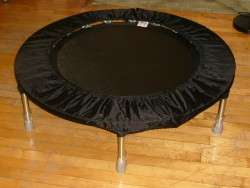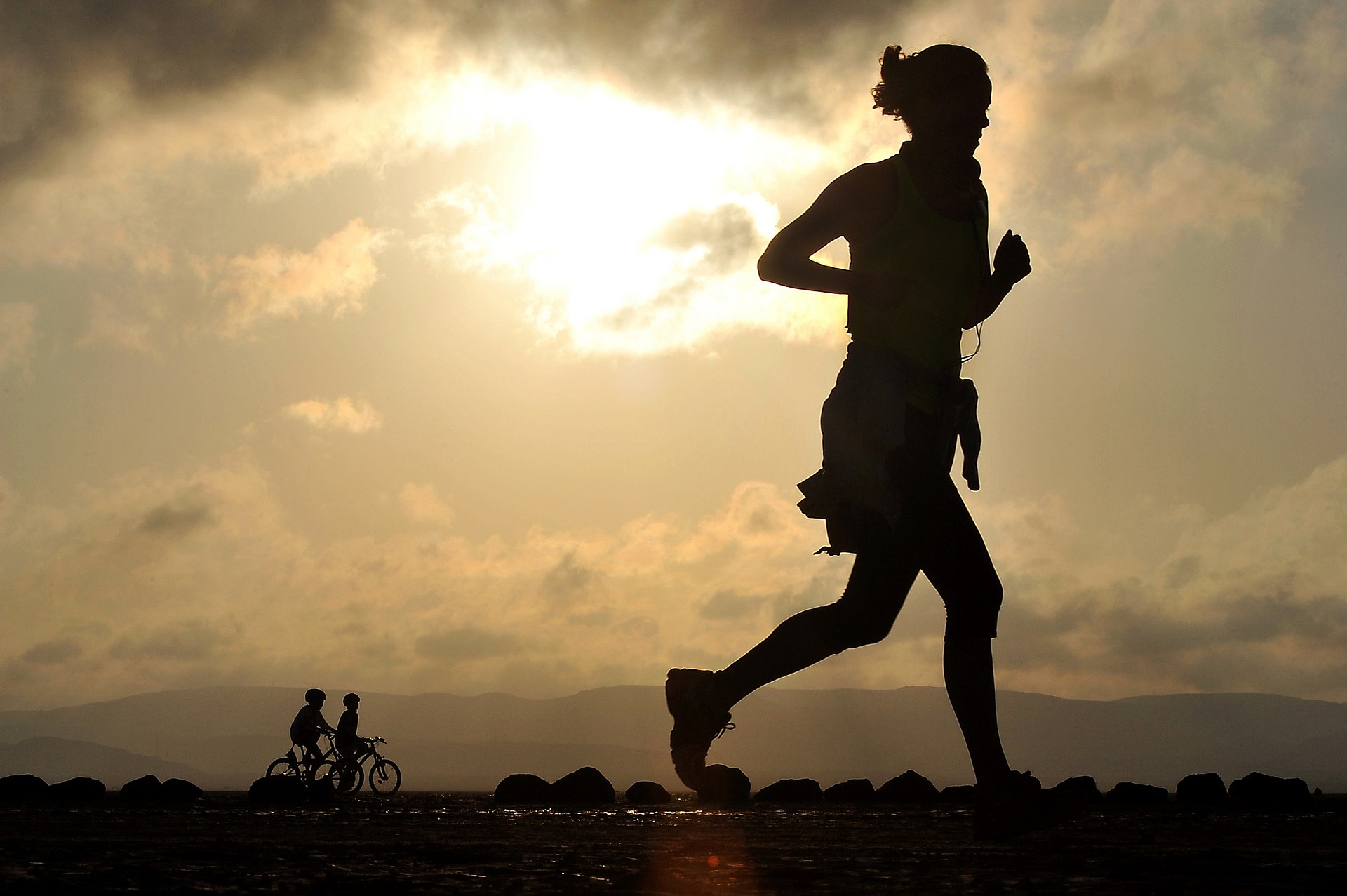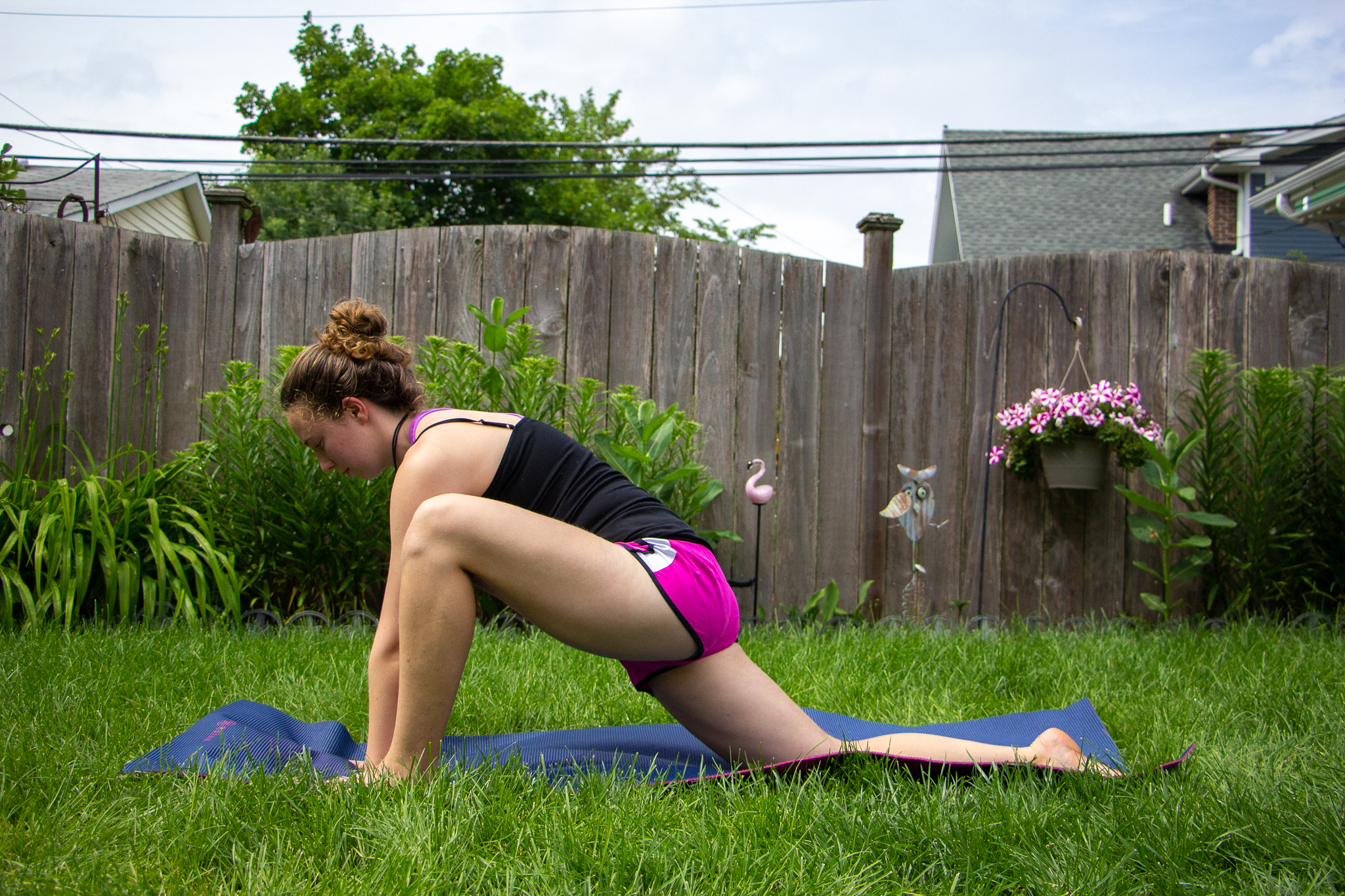This is the rebounder I got a few years ago. It was so good-looking that I couldn’t help taking a picture of it when it was unfolded.
Rebounders have been making a major comeback, but they first became popular in the 70s. There is a movie–I forget the name–where the main character befriends an old lady with a dark past. Once back at home, the main character bounces on a rebounder. I guessed then that rebounding was more of a therapy than simple exercise.
Flash forward to 2013: I started first taking Urban Rebounding classes at the gym. But with all the intricate jumping, twisting and spinning, the classes were very challenging for me. I started thinking about learning to rebound at my own pace. The idea of having such a fun and space-saving fitness equipment at home seemed great to me.
Part of the appeal, of course, was major health benefits that belie the fun-ness. According to a NASA study in 1979 (yes, back in the heyday of rebounding), rebounding was proven to be more efficient than other aerobic activities due to a 68% increase in oxygen supply to our cells. Rebound exercises were mainly used by astronauts to become adjusted to low gravity. I don’t understand all the nuances of this statement but by bouncing, the body needs to work both against gravity and with it, making our bodies adjust to acceleration, deceleration and gravity. This strengthens the entire body even on cellular level. The benefit of strengthening every cell in the body while exercising sets rebounding apart from other forms. And the best part is that it’s great for tightening and toning skin and muscle tone due to the low gravity effects of rebounding!
Another health benefit is cleansing and improving the immune system by flushing the lymphatic system and increasing white blood cells. Studies show that it requires 200 bounces (two minutes) for the cells to expel their waste into the lymph and be finally eliminated from the body. In two minutes of bouncing, white blood cell count is tripled, returning to normal in an hour. Therefore, those with compromised immune systems may benefit from rebounding every hour for at least two minutes.
For me, rebounding was attractive because of its low impact on the knees and joints. My right knee started to hurt from “over-exercising” (as a sports injury doctor put it) and I had to slow down my fitness routine. I noticed that jogging on a treadmill brought pain to my knee after twelve minutes, while jogging on a rebounder warms and relaxes my joints and the longer I jog, jump, and do all sorts of movements on a rebounder, the more I want to keep going. And it’s also fun to jump in the air, side to side, then twist the body, sprint and tap out.
 Rebounding in the morning is now my everyday routine. If for some reason I am not able to do it, I feel out of shape. With regular rebounding I have gained better balance and better performance. No, I can’t do all those extraordinary crazy jumps that I saw on YouTube but I am comfortable with plenty of high bounces and jumping jacks. My rebounder represents my small gym at home: it takes little space but it’s precious to me and it’s one of the things that I can’t do without.
Rebounding in the morning is now my everyday routine. If for some reason I am not able to do it, I feel out of shape. With regular rebounding I have gained better balance and better performance. No, I can’t do all those extraordinary crazy jumps that I saw on YouTube but I am comfortable with plenty of high bounces and jumping jacks. My rebounder represents my small gym at home: it takes little space but it’s precious to me and it’s one of the things that I can’t do without.
If you want to try it out for the first time, the easiest thing is to look up rebounding classes in your area. Or, you can get your own rebounder and follow these fun YouTube videos at home. Note: Just make sure to spend a little more and buy high quality rebounders–it’s worth it! Whether you take classes or do it yourself, the basics of rebounding stay pretty consistent. Turn up some fun, upbeat pop or hip hop, and try the following:
1) Bouncing on both legs, emphasis on ‘down’ rather than ‘up’
2) Jumping jacks
3) Running in place, again emphasis on ‘down’ beat so that you’re not jumping off the rebounder
4) Bouncing and changing the direction of your hips, with feet and knees together
5) “Chorus line” style jump-kicks
More Cardio inspirations: Fat Torching Rowing Machine Workout
4 Multitasking Body Blast Moves for All Over Toning
Choosing the Right Cardio for the Body You Want
___
Photo: Larisa Tazmin; Chasing Chi via Flickr





